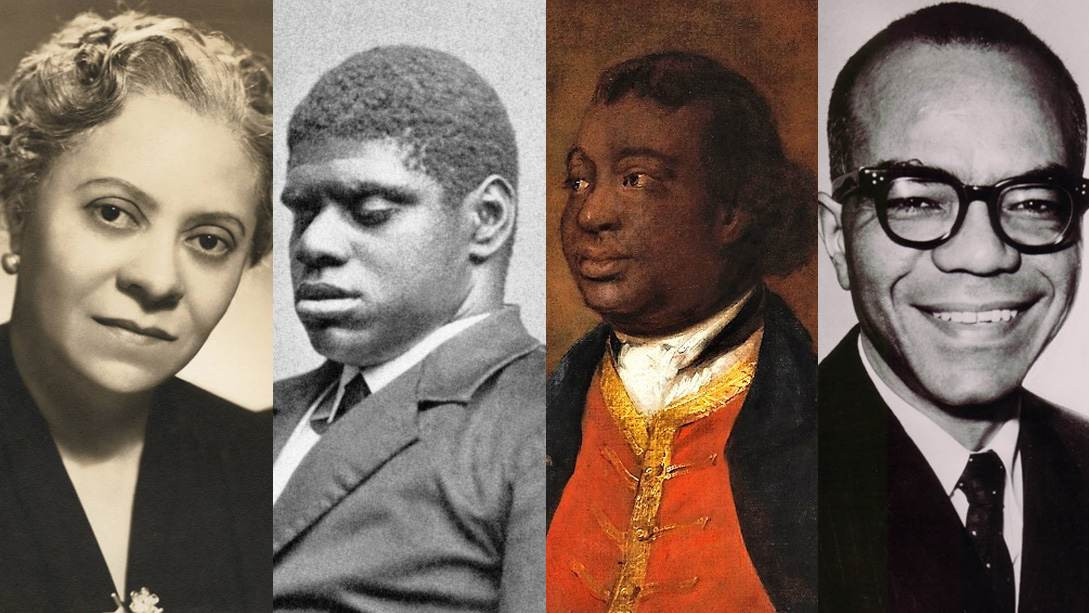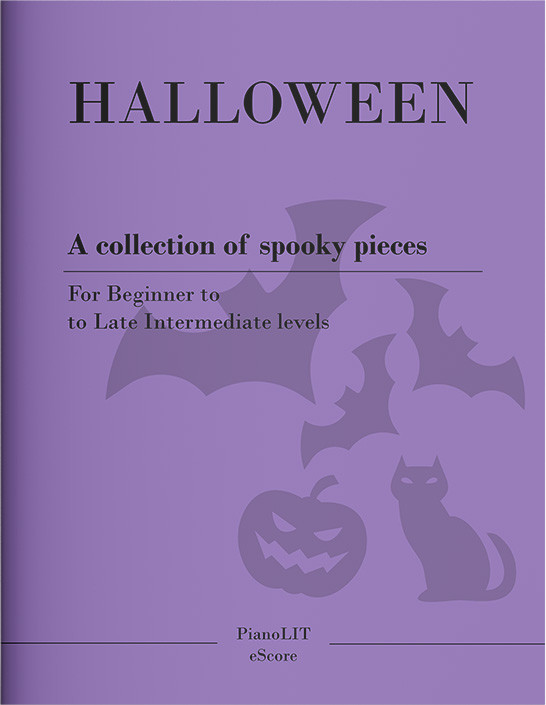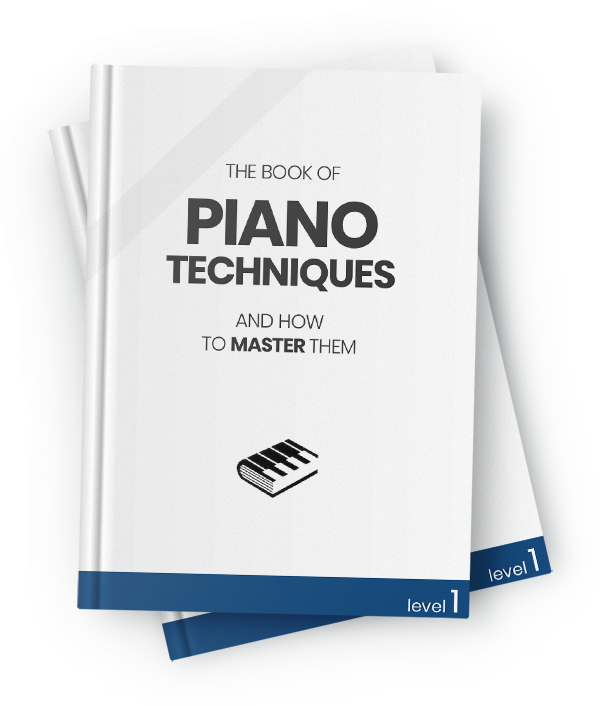Piano pieces by Black Composers
Let's take a quick look at some of the most influential black composers, their inspiring stories, and incredible music.
Feb 10, 2021 • 17 min read
13025

Want a heads up when a new story comes out?
Whether you're a piano teacher, a concert pianist, a piano student, or a music lover, we hope this list will help you discover new and exciting pieces to include in your repertoire. Here we go!
Florence Price (1887 - 1953)
Born in Little Rock, Arkansas in 1887, Price received early training on the piano from her mother. She went on to attend the New England Conservatory, one of few higher musical institutions accepting African-American students. There, she studied composition and counterpoint and graduated in 1906 with both an artistic diploma in organ and a teaching certificate.
After years teaching music privately and serving as the head of the music department at Clark Atlanta University in Atlanta, Georgia, Price returned to Little Rock, then moved to Chicago, where she advanced her musical studies.
In 1932 her Sonata in E Minor for piano won First Prize in the Wanamaker music contest, with overall honors awarded to her first symphony. Frederick Stock, music director of the Chicago Symphony, became a supporter of her music and programmed the work.
Though she composed hundreds of pieces, her catalog did not enter the twentieth-century mainstream canon, and many of her works, including two violin concertos, could have vanished if not uncovered during the renovation of her abandoned home.
This is a short and sweet piece that blends the late romantic style with early American jazz. It combines a beautiful melody with heartfelt harmonies and Price's clean piano writing makes this a great choice for intermediate level pianists.
This piece is part of a set of short teaching pieces written for beginners by Florence Price. Clover Blossoms is a sweet nursery rhyme-like tune, that will help you develop legato, clean sound, and balance between right and left hands.
This piece explores broken chords with alternating hands swaying gently. It is interesting how the composer blends the broken chord pattern with a melodic final section that also includes a beautiful seventh chord at the end.
Roly poly, also called pill bugs, are tiny land-dwelling crustaceans. They get their nickname of “roly-poly” because of the way they curl up into a ball when startled or disturbed.
This intermediate-level piece is a great study for hand coordination and jump precision, containing very vivid thematic material that gives it a playful and whimsical quality to it.
This is a lively dance derived from African American idioms, this piece is effective in performance and not beyond the reach of intermediate pianists.
It should be played vigorously with crisp and clean touch. In this piece, the damper pedal should be used rarely, if at all.
Chevalier de Saint-Georges (1745 - 1799)
Chevalier de Saint-Georges, also known as Joseph Bologne, was a classical composer, virtuoso violinist, a conductor of the leading symphony orchestra in Paris, and a renowned champion fencer. Born in the French colony of Guadeloupe, he was the son of George Bologne de Saint-Georges, a wealthy married planter, and Anne Nanon, his wife's African slave.
When he was young, his father took him to France, where he was educated. During the French Revolution, the younger Saint-Georges served as a colonel of the Légion St.-Georges, the first all-black regiment in Europe, fighting on the side of the Republic. Today, Chevalier de Saint-Georges is best remembered as the first known classical composer of African ancestry. He composed numerous string quartets and other instrumental pieces, as well as operas. The first critical edition of his surviving opera, L'Amant Anonyme (The Anonymous Lover), was prepared by Opera Ritrovata for streaming performance by Los Angeles Opera and the Colburn School in November 2020.
This piece is a remarkable composition that blends simplicity with profound musical ideas. Its structure closely resembles a sonata-form, with distinct exposition, development, and recapitulation.
The main theme in F minor gives us a sense of resignation and loneliness, while the second theme in the relative major key (Ab) is uplifting, brave, and full of hope.
William Grant Still (1895 - 1978)
William Grant Still's career was comprised of many "firsts". He was the first African-American composer to have a symphony performed by a professional orchestra in the U.S., the Symphony no. 1 "Afro-American" (1930).
It was premiered by Howard Hanson and the Rochester Philharmonic. The piece's New York premiere was given by the New York Philharmonic at Carnegie Hall in 1935. He also became the first African-American to conduct a major symphony orchestra in the United States when he led the Los Angeles Philharmonic in 1936.
In the world of opera, his Troubled Island was the first by an African-American to be performed by a major opera company (New York City Opera, 1949) and that same opera was the first by an African-American to be nationally televised.
Still composed Three Visions for solo piano in 1935 and is described as: “Three segments of the suite, Dark Horsemen, Summerland and Radiant Pinnacle, tell the story of the human soul after death: the body expires, and the soul goes on to an apocalyptic judgement. If it is seen that the past life has been a good one, the soul may enter ‘heaven’ or ‘Summerland’. After a period of time, the soul may reincarnate to learn additional earthly lessons on the human plane. Some souls reincarnate many times in a constant circular progress toward Godly perfection.”
Ulysses Kay (1919 - 1995)
Ulysses Simpson Kay, Jr., was one of the leading black composers in the classical music industry in the 20th Century. Born in Tucson, Arizona, Kay grew up in a musically talented family. His uncle, of whom Kay was very fond, was the highly acclaimed jazz musician King Oliver.
Kay studied piano, violin, and saxophone as a child and was later in the glee club, marching band, and jazz band in his Tucson high school. After graduating from the University of Arizona in 1938 with a degree in music education, he earned a master’s degree in composition at Eastman School of Music in Rochester, New York.
In 1947 Kay traveled to Rome, Italy to continue his studies, financed by a series of scholarships including a Julius Rosenwald Fellowship (1947), a Fulbright Scholarship (1949) and the Prix de Rome (1949, 1951). He married Barbara Harrison in 1949 in New York and she later joined him in Italy.
On May 20, 1995 Ulysses Simpson Kay died due to complications of Parkinson’s disease at the age of 78. At the time he was a resident of Englewood, New Jersey.
Ten Short Essays is a wonderful set for beginners written in modernistic style. Ulysses Kay explores rich harmonic languages and a wide variety of moods.
This piece has a melancholic, almost meditative quality that comes from the long notes and intricate counterpoint in the accompaniment parts.
The choral writing here is very original, with the soprano and bass moving in unison creating a solemn and very serious character.
Hale Smith (1925 - 2009)
Hale Smith, Jr. was born June 29, 1925 in Cleveland, Ohio to parents Hale and Jimmie Smith. Beginning piano at age seven, he was introduced to composing and collecting musical scores. His father owned a printing business and his parents were highly supportive. By high school he was playing jazz piano and composing. One of his early compositions was encouraged by Duke Ellington.
In 1970 Smith became a professor of Music at the University of Connecticut, where he taught until he retired in 1984. During this period composing classical music became paramount with solo pieces, duos, chamber ensembles, choir, and incidental music. Among his compositions are In Memoriam, Beryl Rubinstein (1953), Faces of Jazz (1965), and Innerflexions (1977), all for the New York Philharmonic Orchestra. In 1979 he wrote Toussaint L’Ouverture followed in 1985 by Three Patterson Lyrics for soprano and piano and Dialogues and Commentaries (1990-91). His arrangements of spirituals were favorites of Kathleen Battle and Jessye Norman.
Hale Smith's Faces of Jazz is a set of 12 pieces for the intermediate level pianists. His music is highly praised by educators for its freshness and musical quality.
This piece is a lively miniature, full of syncopations, and great for intermediate pianists to start learning the basic jazz rhythms and gestures.
Thomas Wiggins (1849 - 1908)
Born into slavery in Georgia, Thomas Wiggins' life was one of the most incredible and moving episodes in American history. Blind and autistic, and so unable to work with other slaves. He was mesmerized by the music of his owner's young daughters, and by the time he was four, Tom was already playing tunes on the piano.
Thomas Wiggins, or "Blind Tom" as he was called, toured the world playing for celebrities like Mark Twain and the Queen of England, dazzling audiences everywhere. The world he perceived was alive with vibration.
His ear was so sensitive he could ‘see’ objects around him. A musical genius, Thomas Wiggins' life offers a window into the culture of celebrity and racism at the turn of the twentieth century.
The Sewing Song is an extraordinary piece that combines heartfelt and tender moments with fiery and passionate sections. The writing is clean and very pianistic, making this a great piece for late intermediate pianists.
Throughout the main section, this piece will help you develop lyrical phrasing and fine control over the left hand, while keeping the right hand with an even and clear sound.
According to a concert program from 1868, after one exceptionally severe thunderstorm, Tom listened to the drain then "went to the piano and played what is now known as his Rainstorm and said it was what the rain, the wind, and the thunder said to him." Thomas Wiggins was just 5 years old when this happened and the Rainstorm would become one of his favorite tunes, one he would keep playing throughout his life.
This piece was first published in 1865, and we can hear a gentle and naive main tune giving way to a stormy and triumphant middle section. The new theme in this new section is constantly interrupted by an insistent wave of chromatic waves in the bass. Alternating such contrasting ideas is one of the main challenges in this piece.
Ignatius Sancho (c.1729 - 1780)
Ignatius Sancho was born in 1729 on a slave ship and spent the first two years of his life enslaved in Grenada. His mother died when he was very young and his father killed himself, rather than become enslaved. When he was two, his owner brought him to England.
He worked as a servant in Greenwich and then for the Duke of Montagu. Sancho taught himself to read and spoke out against the slave trade. He went on to compose music and write poetry and plays. In 1773, Sancho and his wife set up a grocer's shop in Westminster. Sancho was very well known and his shop became a meeting place for some of the most famous writers, artists, actors and politicians of the day. As a financially-independent householder, he became the first black person of African origin to vote in parliamentary elections in Britain.
After his death in 1780, Sancho's letters were published in a book, which became an immediate best seller. Five editions of the book were published and his writing was used as evidence to support the movement to end slavery. Sancho had mentioned slavery in many of the letters he had written to friends. In 1778, for example, he commented that the main aim of all English navigators was ‘money-money-money'. Sancho also made people aware of how the lives of Africans were made miserable by the Slave Trade. The following extract his from one of the letters published in 1782 shows the power of his arguments:
"... the Christians' abominable traffic for slaves and the horrid cruelty and treachery of the African Kings - encouraged by their Christian customers who carry them guns to furnish them with the hellish means of killing and kidnapping."
Sancho's 12 Country Dances is a remarkable set of short pieces for beginners. These pieces are a great representation of 18th-century British folk dances.
The running scale notes on the right hand give this piece a bold and triumphant character.
The lively and casual character of this piece is highlighted by not just the title but also by the simple harmonic and rhythmic figures. Light and detached 8th notes and quarter notes will help maintain the dance quality of this piece and keep the musical lines moving forward.
We hope this post gave you many ideas of new pieces to add to your repertoire! Other incredible composers to look for are Robert Nathaniel Dett, Scott Joplin, George Walker, William Grant Still, and Samuel Coleridge-Taylor.


